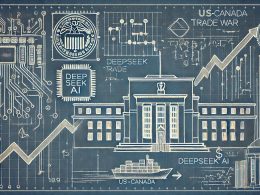by Brad Tank, CIO - Fixed Income, Neuberger Berman
As rainclouds part to reveal synchronized global growth, policymakers ponder structural challenges.
I look forward each year to attending the International Monetary Fund Annual Meetings as part of a Neuberger Berman contingent that typically includes, among others, our CEO George Walker and partners on our Emerging Markets Debt team.
We learn a lot from listening to our clients and counterparties in small meetings, as well as from attending the larger sessions that are part of the official program.
There was a sense of continuity in the economic optimism we heard from clients and other counterparties, but that confidence was also the foundation for a notable change in policymakers’ agenda, as revealed in the official sessions of the meeting.
Confidence
After the 2016 meeting, we noted that most of the central bankers at the event, and particularly those from the developing world, were “generally constructive in outlook.” That was a marked contrast to 2015, and it came only a few months after manufacturing PMIs in the emerging economies bottomed out, in June 2016, at 46.5. Since then, they have powered into positive territory, and last year’s cautious optimism has translated into this year’s more widespread confidence in the sustainability of synchronized global growth.
A central theme last year was widespread frustration with zero (or near-zero) interest rate policy as pursued by the world’s largest central banks. That frustration was nearly absent this year, not because policy rates have moved up much, but because the path out of low rates is now much clearer.
That confidence was reflected in a changing agenda for the meeting. Whereas the focus of the last several years was on financial and monetary stability and preventing worldwide recession after the global financial crisis, this year saw a big pivot toward the structural problems uncovered by that crisis. Even at the 2016 meeting, which followed the European migration crisis of 2015, the Brexit vote and a noisy U.S. Presidential election campaign, only six sessions addressed the distrust of governing elites and the challenges of globalization, and only one considered immigration.
Those issues got twice as much coverage in the 2017 agenda.
When politicians with unorthodox views on how to tackle these problems get elected, it concentrates technocrats’ minds. But renewed economic confidence is also the sunshine they need to tackle the really big job of fixing the roof—a job that requires a move from the emergency tools of central banks to the structural tools of government.
Adapting to Globalization and Technological Change
That shift in agenda implicitly recognizes that distrust of government, distrust of globalization and distrust of immigrants will not be washed away by a few quarters of healthy growth. Immigration is a bigger flashpoint when inequality is high, and growth can increase inequality while returns to capital (including human and educational capital) outstrip returns to labor.
That is likely as long as current trends in globalization and technological change persist. Manufacturing is coming back to the developed world, for example, but it’s coming back in a way that looks quite different from the manufacturing that got offshored to Asia 30 years ago. Today, you don’t build a steel plant in Pennsylvania and fill it with 5,000 steelworkers; you put it in South Carolina and run it with five technologists.
This accounts for the clearest change to the World Bank/IMF agenda this year: several sessions on “The Future of Work,” “The Future of Manufacturing” and other aspects of disruptive “new economy” technology, from robotization, artificial intelligence and self-driving vehicles to cyberwarfare. Not coincidentally, education and training also climbed the priority list (“The Role of STEM Education in Preparing Future Global Talent,” “Pass or Fail: Are Countries Doing their Education Homework?”).
The fact that the agenda is shaping up this way at the World Bank and the IMF also serves to remind us that these are global, not just developed-world, challenges.
Continued Opportunity
Growing enthusiasm for emerging markets was reflected in another change in the agenda: many more sessions devoted to frontier markets. Our Senior Emerging Markets Economist Kaan Nazli noted that there were three sponsored events last year, but seven this year. Kaan recalled being the only attendee at a single-country session focused on Nigeria a year ago; he was joined by more than a dozen others this time around.
A year ago, we said that real rates in the emerging world would continue to attract capital flows, and they have. We expressed confidence in emerging markets and they have delivered solid returns in the past 12 months. The average real rate has gone from 3% to 2% in that time, yet remains sufficiently attractive to draw capital inflows while negative real rates prevail in the developed world. Consequently, while our enthusiasm is slightly tempered by the change in valuation, we remain constructive on emerging markets.
Although the confidence evidenced by capital flows is necessary, it is not sufficient to lay the structural foundation for sustainable growth. A solid foundation requires pro-growth tax, trade and immigration policies. Importantly, it also requires education and training policies that deliver a labor force fit for the new economy rather than the “workshop of the world” that emerging markets were 20 years ago. The biggest robotization boom isn’t happening among the elderly workforce in Japan or the expensive one in the U.S., but in China.
The sunshine of growth creates an opportunity to fix the roof over our economies, but also to strengthen the foundations of the house through structural reform. Will our elected elites rise to the occasion or allow the often-empty promises of populists to dominate the debate?
Copyright © Neuberger Berman














